The last Soviet Heavy Tank
The T-10 was known internally as Object 730 and in some cases IS-8 or IS-9. It was bearing the initial of the ruthless country's leader since the 1930s, but as the latter passed out in 1954, it was renamed T-10, more in line with current denominations. The T-10 was in fact the last Soviet heavy tank of the Cold War, and final development of the IS series started with the IS-1 in 1942. It was eventually accepted into production in 1952, renamed IS-10 (for "Iosif Stalin") and then T-10. The T-10 however was produced in limited numbers. After the death of Stalin, many of his military obsessions went cut down, such as heavy tanks, although in the case the general staff thought it was worth resuming the production, which went on until 1966. The main reason was the development of NATO heavy tanks such as the Conqueror and M103. However, alongside the T-10, all previous developments were terminated, from the IS-4 to the IS-9. The T-10s were attached to elite batallions intended to deal with NATO armour, and other heavy tanks until the 1990s.Development context

IS-3 for comparison
Its closest lineage was the IS-3, and compared to it, the T-10 had a longer hull and an extra pair of road wheels (7 vs. 6) and a larger turret, fitted with a new gun equipped with a fume extractor while it also had an improved diesel engine providing excellent mobility and thicker armour, and it could carry more ammunition. In all plans, the only production heavy tank of the cold war in significant numbers, outside the IS-3, was an all-out improvement over the IS-3. It replaced the IS-3 gradually in most units, and those placed in reserve were quickly resold, notably to Egypt. The T-10 however, was never exported outside of the Soviet Union, but kept in small special units attached to the "western front", facing NATO. The idea of deploying such tanks in independent tank regiments attached to armies and independent tank battalions attached to divisions. These units could link with to mechanized units and support infantry operations and perform breakthroughs. The heavy tank type was maintained despite armoured warfare in World War II demonstrated drawbacks of heavy tanks. Mobity seemed paramount and lmed to the development of medium tanks with heavy guns, redering heavy tanks in general obsolete. As Soviet commanders rushing towards Berlin recalled, mechanized divisions's heavy tanks units lagged behind T-34s. However the type was maintained for a few years as part of the Cold War arms race, despite T-54 and T-62s had a level of protection and armament making them almost equal to the T-10. Production stopped well after the Soviets themselves recoignised the main battle tank (MBT) concept was the only way forward.
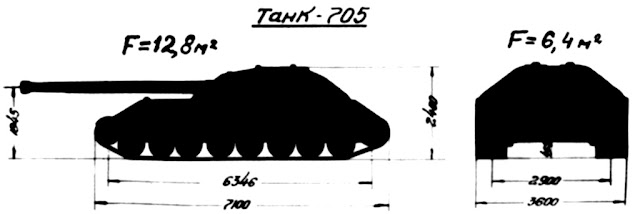

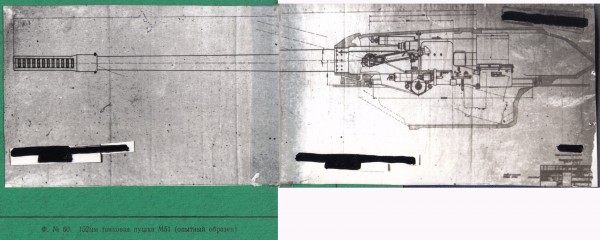
Object 705 original blueprints

IS-7
Design process of the T-10 started indeed in 1944, when there were plans already to replace the IS-3 on the long run. It went though many iterations:
- 2 April 1946: Object 705A, designed by ChKZ as a variant of Object 705 (1946) - IS-7 Program
- 11 April 1949: IS-5 - Object 730.
- 29 February 1953: IS-8 - Object 730 Redesignation
- 1953: IS-9 Further development and denomination change (Pre-production, never applied)
- 1953: IS-10 Further development, first production denomination
- 28 November 1953: T-10 new production denomination as part as the destalinization process.
- T-10 (1952): Initial pre-production batch (former names IS-9 and IS-10)
- T-10A (1956): T-10 with an added single-plane gun stabilizer.
- T-10B (1957): T-10 with an added 2-plane gun stabilizer.
- T-10M (1957): Modernized version*
- 1963 T-10M with OPVT deep-wading snorkel.
- 1967 T-10M with APDS and HEAT rounds.
- Object 268 (1956): Proposed Self-propelled gun, single prototype produced.
Design of the T-10
The T-10 had hull reminiscent of the IS-3, in particular for the same a "Vee-shaped" nose, followed by a breaker. The T-10 was designed by Zhozef Kotin from 1948, and perfected until 1952. It weighted 52 tonnes, loaded in battle order, and the hull measured 7.41 m, and 9.87 m overall with the gun, for a width of 3.56 m, height of 2.43 m. It carried Crew of 4, the commander, driver, gunner and loader.
Protection:
The A/B versions had a frontal turret armor of 203mm@24° (8 in) to 129mm@57° (5 in). The gun mantlet was a solid cast 252mm thick piece.The Upper Glacis had a 120mm@55°&40° compound slope plate, 273mm LoS and the lower Glacis was 120mm@50°, 186mm LoS (horizontal equivalent)
The hull's upper Side was protected by 80mm@62° sloped plates wit an extra stray of 30mm@30°, the total equivalent of 205mm LoS (8-in).
The lower Side, in between the weheeltrain, was 80mm@10° and the rear plate was 60mm in thickness.

Powerplant:
The T-10 was given a 39 liters, 12-cylinder diesel V-2-IS, rated for 700 hp (522 kW), giving a power/weight ratio fo 13 hp/tonne. Suspensions were Torsion-bar. The engine and extra tanks gave a 250 km/150 miles radius, at cruise speed, around 30 kph. At Maximum speed of 42 km/h (26 mph) this was much reduced.Armament:
Main: The T-10 was given a 122mm D-25TA gun, later upgraded in the 1960s. The latter was derived from WW2 Howitzer 122 mm gun M1931/37 (A-19) designed back in 1931 by the No. 172 Plant design bureau, led by F. F. Petrov. Equivalent to 4.8 in it had an interrupted screw breech, hydro-pneumatic recoil, split trail carriage. It was able of 4 rounds per minutes. The 25T was pioneered on the IS-2 and passed onto the IS-3. The D-25TA was an upgraded version. They were supplid by the АРНЕВС shell BR-471B and APHE BR-471 abtle to penetrate 150 mm of armour at 500 m. From 1957 it was upgraded.-Secondary armament: The T-10 had two 12.7 DShKM machine gun, an enhanced version of the "Dushka" of WW2 fame. One was coaxial and the other was rood-mounted with 360° travserse.
Production of the T-10
Manufacturers: Factory 185 and Factory 174.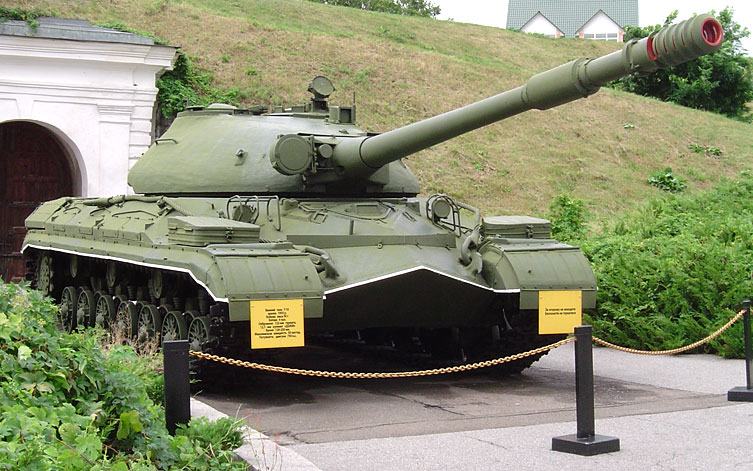
T-10M Heavy Tank at the Museum of the Great Patriotic War, Kiev, Ukraine.
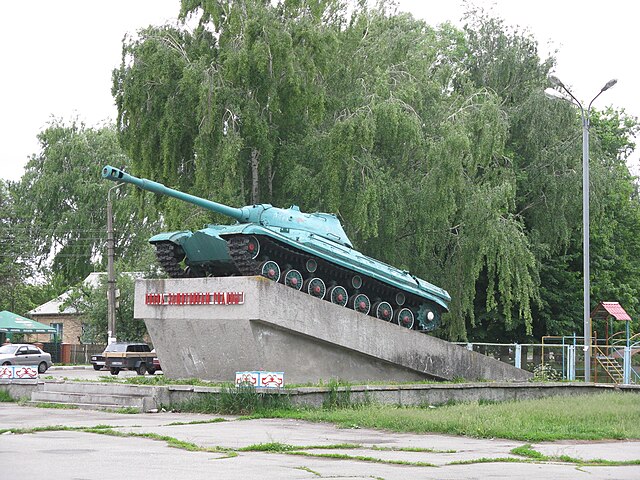
T-10A Heavy Tank fixed on the pedestal in Kagarlyk, Kiev (Ukraine)

T-10 Heavy Tank as preserved in Victory Park, Nizhny Novgorod.

T-10 Heavy Tank on a pedestal at the exit from the city of Krasnoznamensk, Kaliningrad region.
Production variant:
T-10M:
The modernized version was applied to the 1958-1966 production, with two iteratons, allowing the tank to be kept semi-operational or reserve until the 1980s. The T-10M had a longer M-62-T2 L/46 gun, with a five-baffle muzzle brake. The mount was given a two-plane stabilizer, and the roof DSHK machine guns replaced by a 14.5 mm KPVT. Also infrared night vision equipment as installed and a NBC protection liner inside for collective protection, integrating an automatic overpressure system. Because of the longer gun, the overall length went to 10.29 m, versus 9.87 m. The T-10M also had a turret 230mm@24° face with to 137mm@57° sides.The T-10 in service:
In the late 1960s, independent tank battalions were re-equipped with the T-64s as a new elite tank and later, the turbine T-80. Regular tank and mechanized units had upgraded T-55s and T-72s in its place. The T-10 was also killed by the development in the 1960s of new, compact antitank guided missiles (ATGMs), making for the long range brought by the T-10' 25TA gun. BMP-1 infantry fighting vehicles were given some, and a version compatible wit the main gun of the T-64 notably, made the T-10 main gun obsolete; In addtion, rather than lumbering machine counting on brute armour thickness, more sophisticated reactive armour became widespread, without speed loss. In this context, the T-10M was a WW2 dinosaur.At the same time, the T-10, the last and best heavy tank in the USSR, not inferior in firepower (for the M version) to western equivalents such as the M103 and Conqueror. But it surpassed them in mobility and maneuverability, with better all-round protection and smaller profile and silhouette. Its auxiliary weapons were also arguably more powerful, but overall it was produced in larger volumes than its heavier counterparts and proved to have large modernization potential. It was envisioned in the 1980s to equip them with a new fire control system and ERA to remain relevant in the next decade.
It is difficult to assess the precise numbers of T-10 and T-10M in service at the end of the cold war. Estimates ranged wildly, but is is believ around 1,000 were still active when USSR dislocated to form later the Russian Federation. Non Warsaw pact country was ever proposed the tank, and after T-10s were retired in the 1980s, the design was not very appealing to foreign countries and no attempt to make exports was made. It is said that a number were in possession of South Ossetians during the conflict, but other than that, life was quiet for the T-10, maintained for the "big push" westwards, making exercises in beween. No less than 38 had survived, most in static display in Russia, Ukraine and Bielorussia.
Specifications of the T-10M | |
| Dimensions | 7.41, 10.29 oa x 3.56 x 2.43m |
| Total weight, battle ready | 52 tonnes |
| Crew | 4 (driver, gunner, commander, loader) |
| Propulsion | V2-IS diesel 750 hp (559 kW), 13 hp/tonne |
| Suspension | Torsion bars |
| Speed (road) | 50 km/h (? mph) |
| Range | 250 km (150 mi) |
| Armament | 122 mm M62 T2, x 2 14.5 mm KPVT HMG |
| Armor | 230 mm frontal arc, 120 mm glacis, 80 mm hull sids, mantler 252 mm |
| Total production | 1,439 from 1953 |
Sources & links https://en.wikipedia.org/wiki/122_mm_gun_M1931/37_(A-19)
Miller, David, The Illustrated Directory of Tanks of the World, Zenith Press
Perret, Bryan, Soviet Armour Since 1945, London
M. V. Pavlov; I. V. Pavlov, "Domestic Armored Vehicles of the 1945-1965 biennium
М. В. Павлов; И.В. Павлов, "Отечественные бронированные машины в 1945–1965 гг"
Sewell, Stephen ‘Cookie’, Why Three Tanks?, Armor, vol. 108
Sewell, Stephen ‘Cookie’ (2002). “Red Star – White Elephant?” in Armor 2002
Kinnear, James; Sewell, Stephen 'Cookie' Soviet T-10 Heavy Tank and Variants (Osprey)
Tucker, Spencer, Tanks: An Illustrated History of Their Impact, ABC-CLIO (2004)
Magnuski, Janusz. “Czołg Ciężki T-10” in Nowa Technika Wojskowa (1955).
Haskew, Michael "Modern Tanks and Artillery (1945–Present) World's Greatest Weapons (Amber Books 2014)

Author's illustration of an early production T-10 heavy tank in field tests, 1952.

Another illustration of the T-10M, note the "large" turret basket.
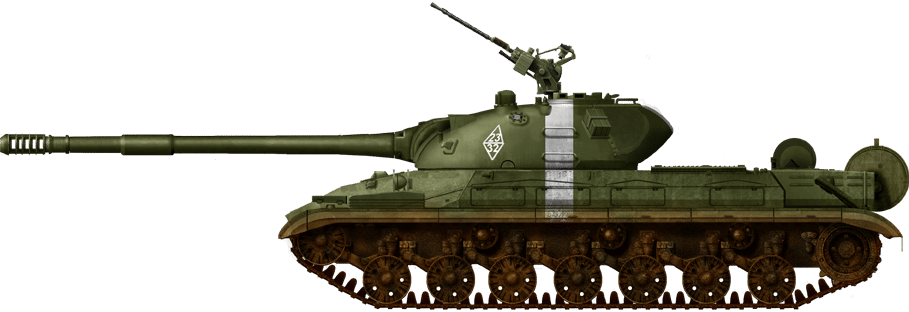
Author's illustration of the T-10M heavy tank, "short" turret basket during the 1968 Prague spring.

Cold War Tanks


































Cold war tanks posters

Cold War Main Battle Tanks

Cold War Soviet Army


